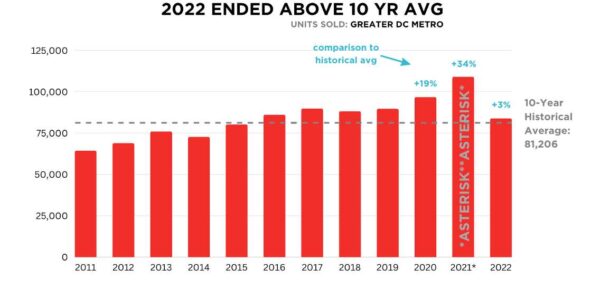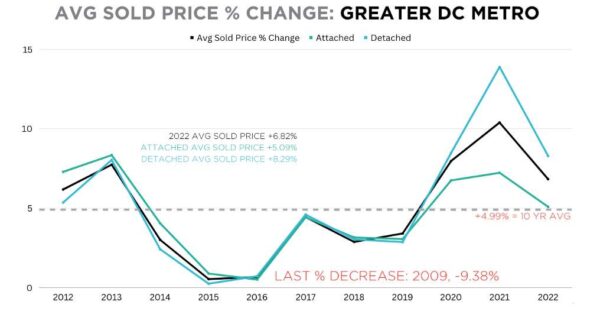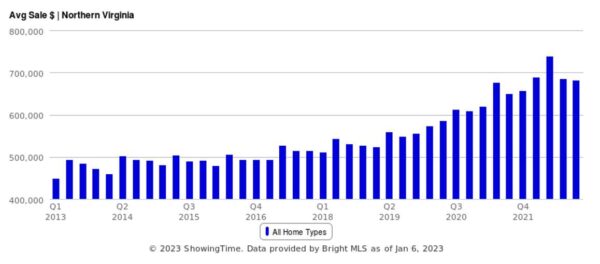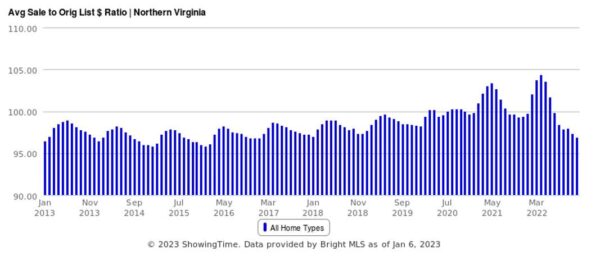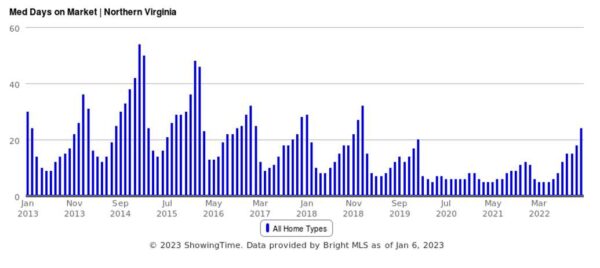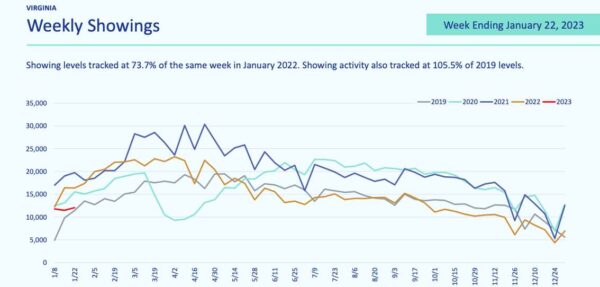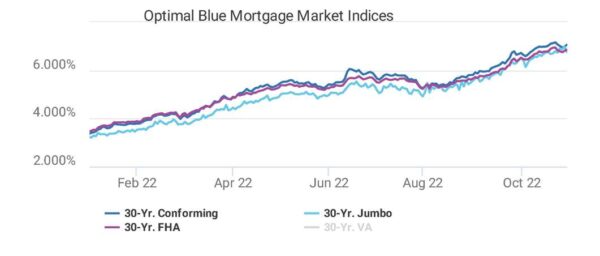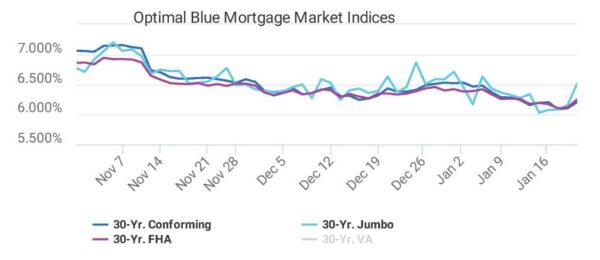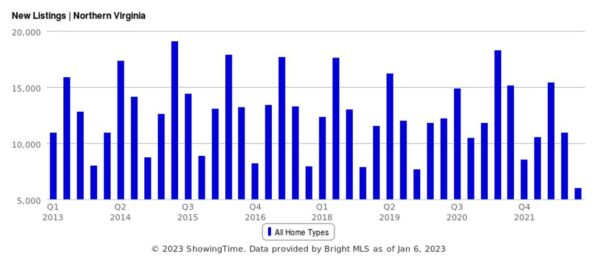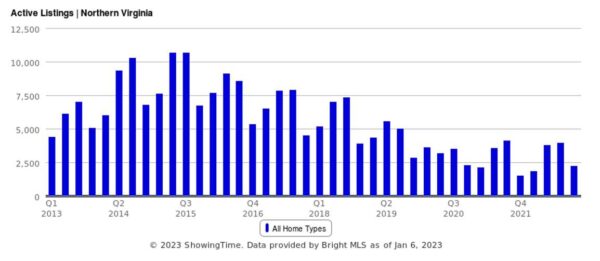This regularly scheduled sponsored Q&A column is written by Eli Tucker, Arlington-based Realtor and Arlington resident. Please submit your questions to him via email for response in future columns. Video summaries of some articles can be found on YouTube on the Eli Residential channel. Enjoy!
Question: A friend of mine just lost an offer on a house and there were 7 other offers, is the market competitive again?
TL;DR Summary (1:37)
Answer: If you’re letting news outlets, national real estate pundits, and Twitter guide your real estate strategy in the D.C. Metro/Northern Virginia area, you’re likely getting a very different perspective on the real estate market than what we’re seeing locally. Despite 6-8+ months of headwinds, the market did a 180 in the first few weeks of January, compared to the weeks prior (this is a common trend).
Multiple offers, escalations, and limited contingencies have returned to many parts of the market, so this week’s column is chart-heavy to show that the “crash” in the 2nd half of the year was all relative to the breakneck pace of the market in 2021 to mid 2022 and how natural supply/demand economics are keeping the market competitive and prices up, despite how much higher the monthly payments are.
Second Half 2022 was Relatively Bad, Historically Normal
Overall, across the D.C. Metro region, total sales transactions finished the year 3% above the 10-year average. Things seemed a lot worse than they were because of the massive number of sales we experienced in 2021 and 2020.
While prices in most sub-markets did drop from the first to second half of ’22, real estate in the D.C. Metro still appreciated in 2022 above the 10-year average. Even condos, which struggled through the heart of the pandemic, appreciated nicely in 2022.
In Northern Virginia, there’s a clear jump in average prices in Q1/Q2 2022, followed by a very normal drop in average prices for Q3/Q4 (this has more to do with more expensive homes being sold in the spring, not a seasonal drop in home values), but the Q3/Q4 average prices fit nicely within the normal trend line and do not suggest any sort of crash, just a jarring difference from what we experienced in the first half of the year.
Average sale price to original asking price ratios, one of the best demand metrics, fell sharply through December, from all-time highs in the spring. While the speed of the drop shocked the market, it dropped to normal Q4 levels so the “crashing market” feeling was only relative to the extreme demand in early 2022, but not so when compared to historical norms.
A similar pattern can be seen in the second chart for median days on market. In fact, the 2nd half of 2022 was still a faster pace market than the 10-year average.
Showing activity during the past week, as measured by Bright MLS, is 73.7% lower than it was in 2022, but 5.5% higher than it was during the same week in 2019.
Interest Rates Are Lower, Relatively Speaking
The relative effect of interest rates plays a huge role in demand. For most of 2022, buyers felt like they were losing every week as rates climbed steadily from January through October. Conversely, rates have fallen since November and stimulating demand.
**It’s worth noting that there are Jumbo loan products currently available at rates ~.5% less than what the second chart shows.**
Just look at the difference between the mortgage rate trends from January ’22-October ’22…
…compared to the mortgage rate trends since November ’22…
Not Much Demand Needed to Make the Market Competitive
With supply this low, it doesn’t take historic demand to generate competition. Q4 2022 was by far the lowest quarter for new listing supply in over a decade and total active listings still trail well behind the 10-year average heading into a new year.
We’re currently seeing many more homes go under contract than what is being supplied to the market. For example, over the past seven days in Arlington, 48 properties went under contract compared to only 31 new listings.
The pace of new listings will continue to increase through the spring, peaking from roughly mid-March through May, so it will be interesting to see whether demand will keep pace with increased supply or whether supply will outpace demand and reduce the amount of competition that currently exists.
For now, the low inventory and current demand levels are enough to create competition in many sub-markets for good properties priced appropriately and thus putting upward pressure on prices at a time when many expected prices to fall or remain stable.
If you’d like to discuss buying, selling, investing, or renting, don’t hesitate to reach out to me at [email protected].
If you’d like a question answered in my weekly column or to discuss buying, selling, renting, or investing, please send an email to [email protected]. To read any of my older posts, visit the blog section of my website at EliResidential.com. Call me directly at (703) 539-2529.
Video summaries of some articles can be found on YouTube on the Eli Residential channel.
Eli Tucker is a licensed Realtor in Virginia, Washington DC, and Maryland with RLAH Real Estate, 4040 N Fairfax Dr #10C Arlington VA 22203. (703) 390-9460



